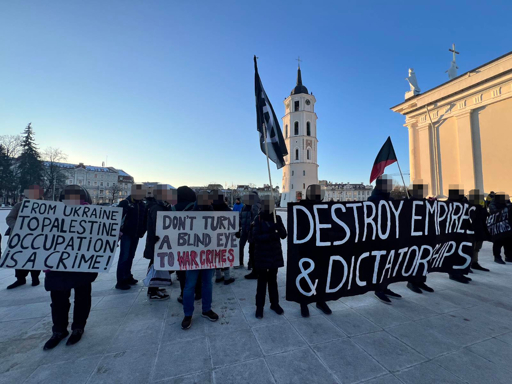Debates on anti-militarism continue to shake the anarchist movement in the western part of the world. Often in these debates we can see some organisations from Ukraine or Russia show support for the ‘no war but class war’ position. Three and a half years since the full-scale invasion of Ukraine, the anarchist movement is extremely divided. Previous strategies of ‘listening to local voices’ have mostly failed for those who were not interested in the first place. With more scandals certain to come in the future, it’s important to understand how we came to this point.



As much as I would like to agree, states have historically been far better at fighting wars than most kinds of anarchist organization. Yes, there have been bumbling fools here and there, states can be miserable at innovation - but their organizational model usually prevails if given some time. :(
The methods of state warfare and non-state insurgency differ a lot. A war is financed by the tax office, an insurgency is mostly financed by donation, theft and loot. A tax office will get a great deal further in raising money than even the most talented partisan, because they are pretty uncontestable and systematically squeeze everyone.
State-like methods will have industries leveraging scaling laws and division of labour to produce faster and cheaper (a trivial example: I can be much more productive and make less mistakes if I produce ailerons for 20 drones in a row, or parachutes for 20 drones in a row). A partisan organization will have difficulty doing that and evading detection.
In war, territory matters - you want to control territory that is safe for your side, and locate production where it cannot be obstructed, so you can make stuff by the ton.
This could somewhat change in the near future, but not massively. The destabilizing factor which might change things is likely low-cost drones in all environments. Attacking a big sitting duck might become, at least for a while, somewhat easier than defending a big sitting duck. Maybe it already has (referring to some incidents of a drone swarm flying out of a truck).
However, I am not convinced if this changes the playing field enough.
This somewhat saddens me. To prevail in military conflict, even an anarchist organization would have to adopt methods considerably resembling a state, and revert to its old shape later - if it can. I guess the old saying “war is healthy for a state” (and almost nobody else) isn’t so wrong. :(
Personal perspective: when Ukraine got invaded by Russia, I tried to influence the situation via anarchist organizations first, because that’s where I had contacts. At first, they achieved meaningful things. Ukrainian folks equipped their comrades for war, Russian folks torched and derailed various stuff… but as things continue, what counts more and more is ability to mass produce cheap technology. Anarchist methods have a vital place in research and innovation, but if something even remotely seems to get results, state financing and methods from big industry are better employed to quickly replicate a successful tool. So I foresee that if I come up with a successful tool and want it replicated, I would have to cooperate with an organization capable of mass production - and my anarchist comrades currently don’t have these. In a different world, maybe they would - as a result of experiences and opinions that point out the value of organizing things on big scale. It’s not impossible, anarchists have sometimes organized big stuff.